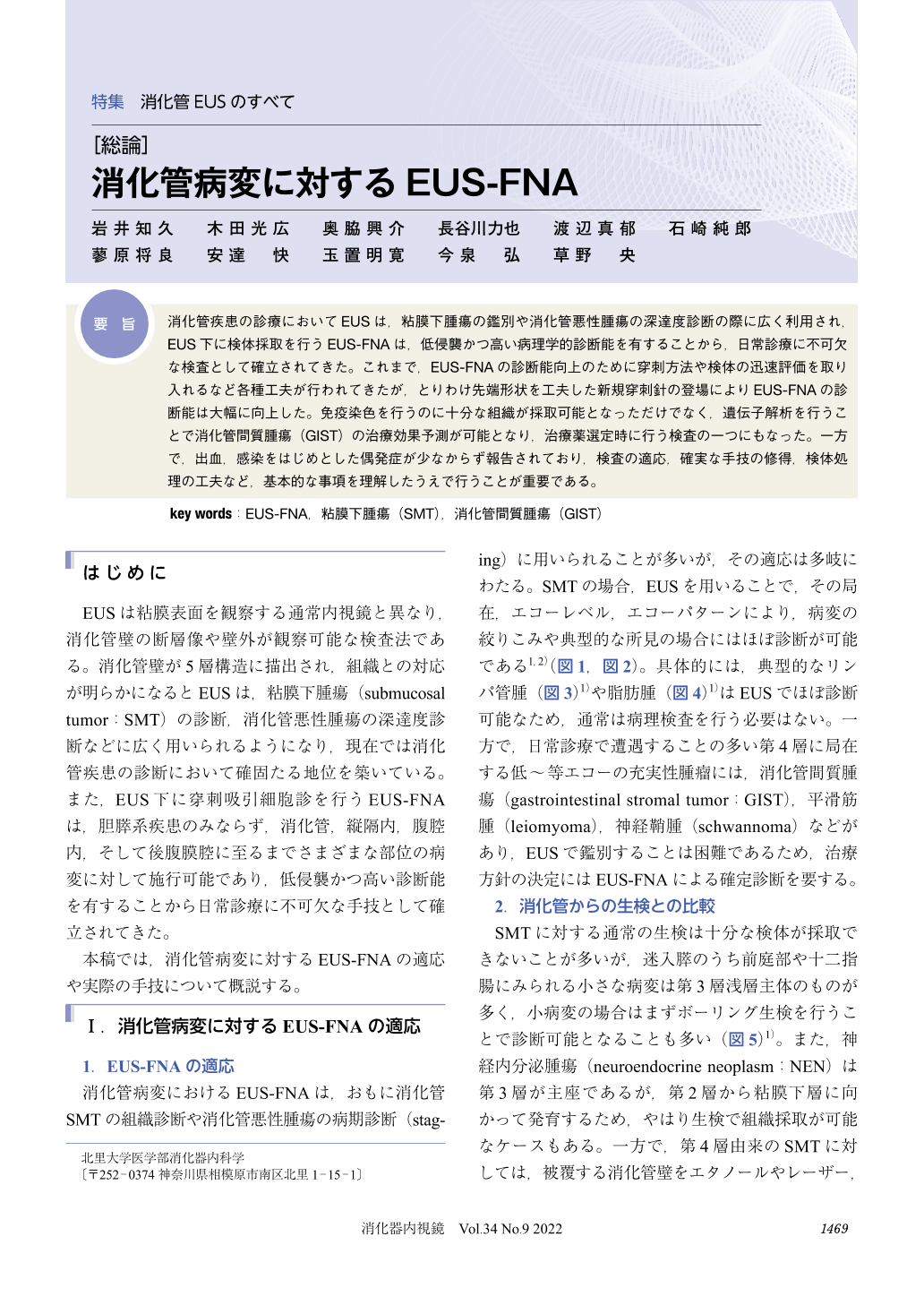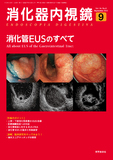Japanese
English
- 有料閲覧
- Abstract 文献概要
- 1ページ目 Look Inside
- 参考文献 Reference
要 旨
消化管疾患の診療においてEUSは,粘膜下腫瘍の鑑別や消化管悪性腫瘍の深達度診断の際に広く利用され,EUS下に検体採取を行うEUS-FNAは,低侵襲かつ高い病理学的診断能を有することから,日常診療に不可欠な検査として確立されてきた。これまで,EUS-FNAの診断能向上のために穿刺方法や検体の迅速評価を取り入れるなど各種工夫が行われてきたが,とりわけ先端形状を工夫した新規穿刺針の登場によりEUS-FNAの診断能は大幅に向上した。免疫染色を行うのに十分な組織が採取可能となっただけでなく,遺伝子解析を行うことで消化管間質腫瘍(GIST)の治療効果予測が可能となり,治療薬選定時に行う検査の一つにもなった。一方で,出血,感染をはじめとした偶発症が少なからず報告されており,検査の適応,確実な手技の修得,検体処理の工夫など,基本的な事項を理解したうえで行うことが重要である。
EUS is widely used in the diagnosis of gastrointestinal diseases to differentiate subepithelial tumors or to diagnose the depth of malignant tumors in the gastrointestinal tract. EUS-FNA, in which specimens are obtained under EUS guidance, has established as an essential technique in clinical practice because it is minimally invasive and has high pathological diagnostic performance. Although various efforts have been made to improve the diagnostic performance of EUS-FNA, including puncture methods and rapid on-site evaluation of the specimens, the introduction of novel puncture needles with improved tip shapes have greatly improved the diagnostic yield of EUS-FNA. In addition to obtain sufficient tissue for immunostaining, genetic analysis has made it possible to predict the efficacy of treatment for GIST and is now one of the essential techniques used in the selection of therapeutic medicine. On the other hand, there have been reports of a few cases of hemorrhage, infection, and other adverse events, so it is important to understand the indications for the examination and the appropriate processing of the specimen to yield better outcomes.

© tokyo-igakusha.co.jp. All right reserved.


